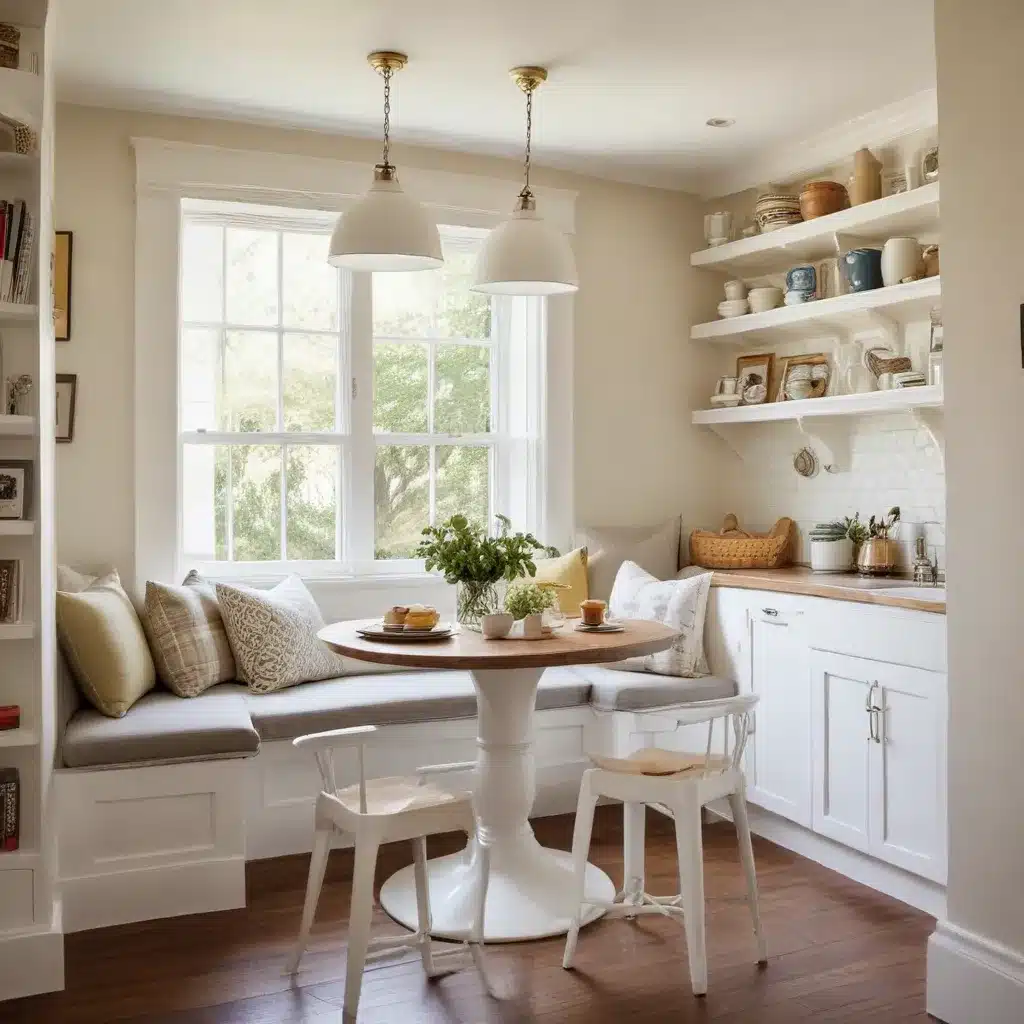
Optimizing Kitchen and Dining Spaces: A UK Perspective
In the ever-evolving landscape of home design and construction in the UK, the integration of casual dining nooks within the kitchen has become an increasingly popular trend. These seamless seating arrangements not only enhance the functionality of the kitchen but also create a warm, inviting atmosphere for family gatherings and casual dining experiences. As homeowners and builders in the UK explore this design approach, it is essential to navigate the complexities of building regulations, cost management, and sustainable practices to ensure a successful and compliant outcome.
Regulatory Compliance: Navigating the UK Building Standards
When incorporating a casual dining nook into a UK kitchen, it is crucial to adhere to the latest building regulations and standards set forth by authorities such as the Building Regulations 2010 and the Approved Documents. These comprehensive guidelines address a range of considerations, including:
-
Accessibility and Mobility: The design must ensure that the dining nook complies with the requirements for accessible and inclusive spaces, as outlined in Approved Document M of the Building Regulations. This may include provisions for wheelchair users, appropriate seating heights, and adequate maneuvering space.
-
Fire Safety: The integration of the dining nook must not compromise the overall fire safety of the kitchen and the surrounding areas. Compliance with Approved Document B, which covers fire safety, is essential to guarantee the safety of occupants.
-
Ventilation and Indoor Air Quality: The positioning and design of the dining nook must not interfere with the proper ventilation of the kitchen, as specified in Approved Document F. This includes ensuring adequate airflow and the appropriate placement of any necessary vent openings or extractors.
-
Structural Integrity: The construction of the dining nook must not compromise the structural integrity of the existing kitchen or the overall building. Adherence to Approved Document A, which outlines the structural requirements, is crucial to maintain the structural soundness of the property.
By working closely with qualified professionals, such as chartered architects or building control officers, UK homeowners and builders can ensure that their casual dining nook designs meet the necessary regulatory standards and provide a safe, compliant, and functional space for their families.
Cost Management: Balancing Investment and Long-term Value
When incorporating a casual dining nook into a UK kitchen, it is essential to consider the financial implications and explore strategies to optimize the investment. Here are some key factors to consider:
-
Material Selection: The choice of materials for the construction of the dining nook can have a significant impact on the overall cost. UK homeowners and builders should carefully evaluate the cost-effectiveness and durability of options such as timber, plywood, or MDF, weighing the initial expenditure against the long-term maintenance and performance requirements.
-
DIY vs. Professional Installation: While some homeowners may opt for a DIY approach to constructing the dining nook, it is essential to carefully assess the level of expertise required and the potential risks involved. In some cases, hiring a professional contractor or carpenter may be a more cost-effective solution, ensuring quality workmanship and compliance with building regulations.
-
Customization and Bespoke Design: Tailoring the dining nook to the specific dimensions and layout of the kitchen can enhance its functionality and visual appeal. However, this customization may come with a higher price tag. Homeowners should balance the desired level of personalization with the available budget to achieve a cost-effective solution.
-
Energy-efficient Considerations: Incorporating energy-efficient features, such as insulation or energy-efficient lighting, can contribute to long-term cost savings on utility bills. Exploring these options during the design and construction phase may provide a valuable return on investment.
By carefully evaluating the cost factors and exploring strategies to optimize the investment, UK homeowners and builders can create a casual dining nook that not only enhances the functionality of the kitchen but also provides long-term value and cost-effectiveness.
Sustainable Building Practices: Minimizing Environmental Impact
In the UK’s evolving construction landscape, there is a growing emphasis on sustainable building practices, and the integration of casual dining nooks within kitchens is no exception. Homeowners and builders should consider the following sustainable approaches when designing and constructing these dining spaces:
-
Material Selection: Prioritize the use of environmentally friendly and renewable materials, such as sustainably sourced timber or recycled composite materials, to reduce the carbon footprint of the project.
-
Energy Efficiency: Incorporate energy-efficient features, such as LED lighting, insulation, or passive heating and cooling strategies, to minimize the energy consumption and environmental impact of the dining nook.
-
Waste Reduction: Implement waste-reduction strategies during the construction process, such as careful planning to minimize material waste and proper disposal or recycling of any leftover materials.
-
Indoor Air Quality: Ensure that the design and construction of the dining nook prioritize the use of low-emitting materials and promote good indoor air quality, contributing to the overall health and well-being of the occupants.
-
Longevity and Adaptability: Design the dining nook with longevity and adaptability in mind, allowing for future modifications or repurposing to extend the useful life of the space and minimize the need for extensive renovations or replacements.
By embracing sustainable building practices, UK homeowners and builders can create casual dining nooks that not only meet their functional and aesthetic needs but also contribute to a more environmentally responsible and resource-efficient future.
Conclusion: Embracing the Casual Dining Nook Trend in the UK
The integration of casual dining nooks within UK kitchens offers a compelling solution for homeowners seeking to optimize their living spaces, enhance family interactions, and create inviting culinary hubs. By navigating the regulatory landscape, managing costs effectively, and embracing sustainable building practices, UK homeowners and builders can seamlessly incorporate these dining nooks into their kitchen designs, ultimately transforming the way they experience and interact with their homes.
For more information on kitchen design, construction, and home improvement projects in the UK, visit https://abc-home.co.uk/. Our team of experts is dedicated to providing comprehensive guidance and support to ensure your next project is a success.
















